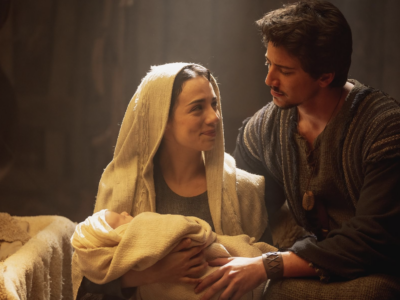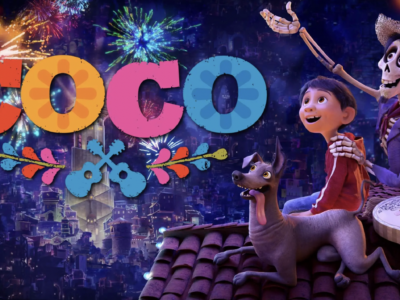We went to see Indiana Jones and the Dial of Destiny with my in-laws. After the movie was over and we were all gushing about how great it was, my mother-in-law said something like, “It was also kind of sad. We grew up with those characters.”
My parents and my in-laws are all about the same age, in the same decade of life, when Medicare kicks in and Social Security opens up, and people start asking when you’re going to retire. My in-laws are a couple of years ahead of my parents, having already crossed over into the Age of Retirement, but my parents aren’t there yet, still pondering What Comes Next, still wondering what the future holds for them when, or if, they decide to hang up their hats.
Indiana Jones and the Dial of Destiny
Indiana Jones and the Dial of Destiny begins with a flashback to one of Indiana Jones’s early adventures. Then, it fast-forwards in time to Professor Jones’s retirement party and Indy’s lonely and cluttered apartment, the place where he will sit and stare into the empty abyss of his old age.
To Indy’s surprise, Helena Shaw, the daughter of his old friend, Basil, invades his… golden… retirement, asking after an ancient relic Jones and Basil retrieved from the Nazis in 1944. The relic, Archimedes’ Dial, is purported to have unusual powers that can allow the one who possesses it the ability to turn back time and change history. But Helena’s visit draws the attention of the bad guys in the movie, and Jones is snatched up into one last wild, suspenseful adventure around the globe.
Faithifying Your Viewing: Finding the Love
What happens to superhero-adventure types when they retire?
It’s a deeply personal, universal question every generation has to face—what will become of me when my occupation is no longer my primary identity? What will I become when I become… useless?
Based on anecdotal evidence around me, I think this is an especially challenging question for the Boomer generation. I’ve heard that, because the Boomer generation didn’t really trust the leadership of the former generation, they’ve also lacked the ability to trust the potential leadership of the next generation. The Baby Boomers have questioned the morals and ideals of everyone before them and everyone after them ever since Vietnam.
Many resist the question about What Comes Next so fully they avoid it entirely, forgoing retirement and plowing forward in whatever has given their lives meaning all these years. Just this morning, the national news talked about “our aging legislators,” how our country is being led by octogenarians on both sides of the aisle. Many who are in power seem unwilling to give up their leadership positions, partly because they have every right to continue working if they still can. But I also suspect they are afraid of what their lives look like separate from their leadership roles. They have yet to find a satisfying answer in response to “What’s next?”
Indiana Jones and the Dial of Destiny challenges those in the Boomer generation—who have been along for the ride with Indy as he ran away from boulders and nearly-naked natives, cursed snakes, and sought the rarest treasures of this earth—to find new purpose, to see hope for their future beyond the rough-and-rowdy days of productivity and accomplishment. Indy’s last adventure reminds us to seek after a different kind of treasure, the kind that can’t be destroyed, the kind that thieves can’t steal. It’s a treasure that protects, trusts, hopes, perseveres, and never fails.
The Dial of Destiny also challenges those of us in rising generations, the Gen Xers and Millennials and Zers, to seek out the wisdom and discernment of older generations.
We’ve learned well from the Boomers to be wary of each other, and that lack of trust and sometimes lack of respect has bled into all corners of our lives. We tolerate and sometimes ignore each other’s antiquated or idealistic perspectives in favor of our own, launching separate businesses and churches and clubs to suit the interests of our particular generation.
This isn’t the way a healthy community—or society—operates.
Paul told Titus to teach the older people in his community how to encourage the younger people. Likewise, “Listen, my son, to your father’s instruction and do not forsake your mother’s teaching,” the Teacher in Proverbs 1:8 began.
We are meant to do life together, young and old, generation upon generation. The younger generations long for leaders who see them, encourage them, correct them, and guide them, elder leaders who call out gifting from within us when we can’t even see it yet. Leadership looks different when you’re 60 or 70 or 80 than it looks when you’re 30 or 40 or 50.
What changes, I think, is the type of treasure you’re pursuing together, treasure that never fails, the treasure of love and relationship, laughter and joy, the treasure of presence and the treasure of story, the treasure of shared experiences and the treasure of vulnerability, the treasure of mercy and the treasure of awe.
That is a life defined not by what we do, but who we are, and whose we are. A life not defined by its usefulness but by its sheer existence, valuable because we are loved by and made in the image of God, made to be in relationship with one another. It is our ageless destiny.
Ultimately, Indy discovered that life’s treasure hunt is better taken together, doing the good work of loving and caring for each other, encouraging one another, and lifting each other up.
Especially when life dumps you in a pit of snakes.





 Copyright
2024
Root and Vine
Copyright
2024
Root and Vine